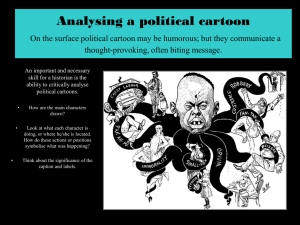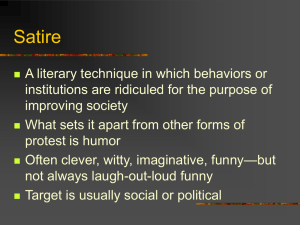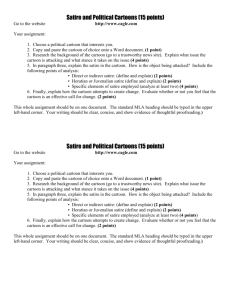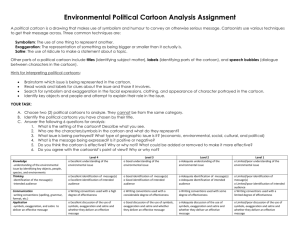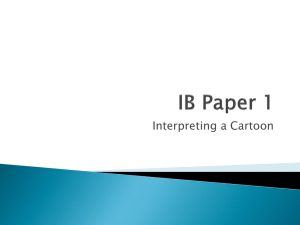Using Editorial Cartoons to Teach Social Justice
advertisement
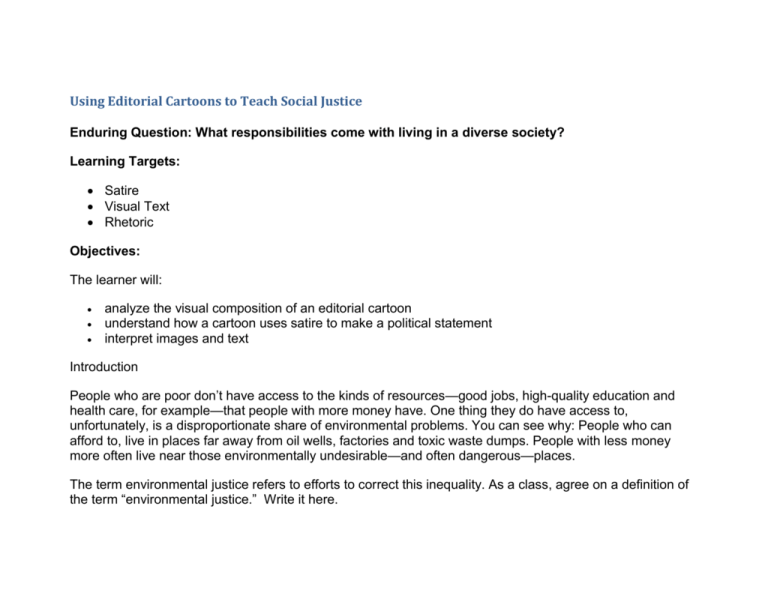
Using Editorial Cartoons to Teach Social Justice Enduring Question: What responsibilities come with living in a diverse society? Learning Targets: Satire Visual Text Rhetoric Objectives: The learner will: analyze the visual composition of an editorial cartoon understand how a cartoon uses satire to make a political statement interpret images and text Introduction People who are poor don’t have access to the kinds of resources—good jobs, high-quality education and health care, for example—that people with more money have. One thing they do have access to, unfortunately, is a disproportionate share of environmental problems. You can see why: People who can afford to, live in places far away from oil wells, factories and toxic waste dumps. People with less money more often live near those environmentally undesirable—and often dangerous—places. The term environmental justice refers to efforts to correct this inequality. As a class, agree on a definition of the term “environmental justice.” Write it here. Now examine the editorial cartoon below, which addresses the connections between poverty and damage to the natural environment. Steve Greenberg—VC Reporter, Ventura. Calif. Reprinted with Permission. The Cartoon’s Strategies 1. Visual Composition Visual composition refers to the way the objects are situated in a cartoon (or photo or painting). Complete the chart to compare the visual elements of the cartoon that refer to rich and poor. You may first want to define “rich” and “poor.” Look over the information in your chart. What does the visual composition of the cartoon tell you about the relationship between poverty and pollution? 2. Satire Now take what you’ve observed about the visual elements of the cartoon and think about another strategy the cartoonist uses: satire. Cartoonists use satire to exaggerate something. Sometimes it’s an action, other times an event or situation. Exaggeration makes it look ridiculous, and so exposes something troubling that the cartoonist is criticizing or wants to change. Imagine, for example, that you think you have to take too many standardized tests, and you want to make an editorial cartoon that says so. You might show a student looking at her fall schedule and seeing these courses listed: Test-Taking in Math; Test-Taking in English; Test-taking in Social Studies. By suggesting that the student’s classes are all geared to preparing her for the test, the cartoon would be saying that school is more about preparing for the tests that about learning. How does the cartoonist Steve Greenberg use satire in the cartoon? What does the satire expose? What point does the cartoon make? Application of Learning Outcome:


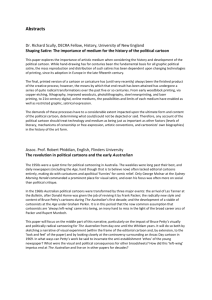

![Phrasal Verbs in Cartoons[2]](http://s2.studylib.net/store/data/005310718_1-897d1a57ddfabbe64c60ba43d0222e3b-300x300.png)
